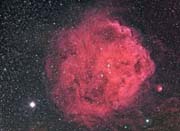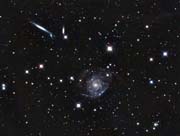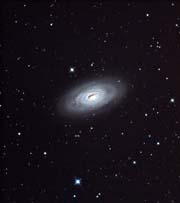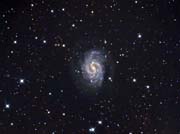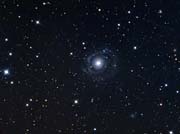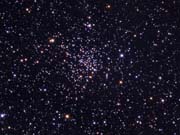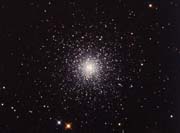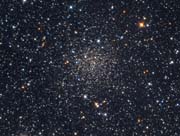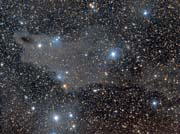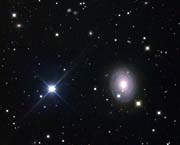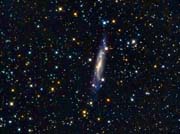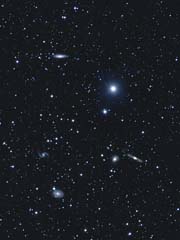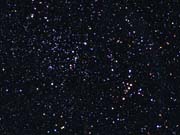This is the first image of 2018 - into the second month - what rotten weather we had - mainly cloud, but to add insult to injury, when clear a very bright Moon.
If you thought SH171 (the last image of 2017) was big, here's a monster! Situated at the top of the main Orion asterism (that's Betelgeuse and Bellatrix at the bottom of the image), Sharpless 264 spans a whopping 6 1/2 degrees. That's the equivalent of 13 full Moons. If one assumes a distance of 1500 light years, that makes it 170 light years across! I started trying to capture this in December 2017, but was constantly foiled by cloud. Eventually I managed to get some data on 21st. January and the rest on 6th February 2018. QSI683 on Canon 70-200L zoom lens at approximately 85 mm focal length. 13 x 20 minutes H-alpha (for luminance and colour) plus 5 x 20 minutes each OIII and SII. But very little colour in the latter two, so I've used H-alpha in the Red channel. Often known as the 'Angel Fish' or 'Alien Face'. Larger image
